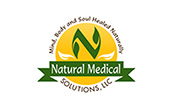Meniscus Tear Treatment in Cobb, GA

The medial meniscus and lateral meniscus—also known as menisci—are crescent-shaped bands of thick, rubbery cartilage that are attached to the shinbone. This cartilage acts as a shock absorber and stabilizes the knee by distributing a person's body weight evenly. Without the meniscus, a person's body weight would be unevenly distributed to the bones in the legs, which can lead to arthritis in the knee joint. The medial meniscus is on the inner side of the knee joint, and the lateral meniscus is on the outside of the knee.
Meniscus tears are common injuries because the cartilage can be damaged in different ways. Doctors commonly see these tears in athletes who play contact sports. Meniscus tears are sometimes related to trauma, but they also can weaken with age too. Tears are more common in people who are 30 or older. Movements like squatting or stepping can lead to injury in people who have weak menisci.
Symptoms and Diagnosis of a Meniscus Tear
Generally, if a person suffers from a torn meniscus, he or she will hear a loud popping sound from around the knee joint. Another common complaint is joint locking—or the inability to completely straighten the joint. The torn cartilage physically prevents normal motion in the knee. Other common symptoms of a meniscal tear include the following:
- Pain, stiffness and swelling around the knee
- Catching or locking of the knee
- Tenderness when touching the knee
- Popping or clicking within the knee
After asking about your symptoms, your physician will examine the knee and test its overall range of motion, as well as determine the degree of pain. It's important for you to describe any symptoms accurately during this process. The amount of pain and the appearance of swelling can provide important clues about the location and severity of the injury.
Physicians use imaging tests—including X-rays, ultrasounds or an MRI—to diagnose meniscal tears. These tears are classified in three grades. Grades 1 and 2 are not considered serious and may not require immediate medical intervention, but a grade 3 tear is considered to be a full meniscus tear that may require surgery. Your doctor may also use an arthroscope to examine the inside of your knee. The physician inserts the device through a tiny incision and is able to transmit high-quality images of your knee onto a monitor.
Treatment of a Meniscus Tear
Treating a meniscus tear depends on several factors, including the type of tear, the patient's overall physical activity level and the severity of the symptoms. Physicians usually treat acute meniscal tears with non-surgical methods like heat/cold therapy, anti-inflammatory medications and physical therapy. Depending on the size and type of meniscus tear and the patient's physical demands, these may be the only treatments that are necessary.
If the symptoms are not significant, a patient may be able to delay or avoid surgery altogether. It is only when a meniscus tear becomes symptomatic and interferes with daily activities that a patient should consider having surgery. Grade 3 meniscus tears usually require surgery. The most common procedures physicians use to treat tears include:
- Arthroscopic meniscectomy: A physician uses this procedure to remove the torn portion of the meniscus while leaving as much healthy cartilage in place as possible.
- Meniscus repair: A physician uses this surgical procedure to repair the damaged meniscus and to restore normal knee function.
- Meniscus transplant: Using a donated meniscus, a physician can completely replace the damaged meniscus to restore knee function.
Request more information about meniscus tears today. Call (770) 674-6311 or contact Dr. Gail Ravello online.
Natural Medical Solutions Wellness Center
Address
1130 Upper Hembree Rd.Roswell, GA 30076
(770) 674-6311
www.natmedsol.com
Hours
Mon:
9:00 am - 4:00 pm
Tue:
9:00 am - 4:00 pm
Wed:
9:00 am - 4:00 pm
Thu:
10:00 am - 6:00 pm
Fri:
9:00 am - 2:00 pm
Sat:
9:00 am - 2:00 pm


